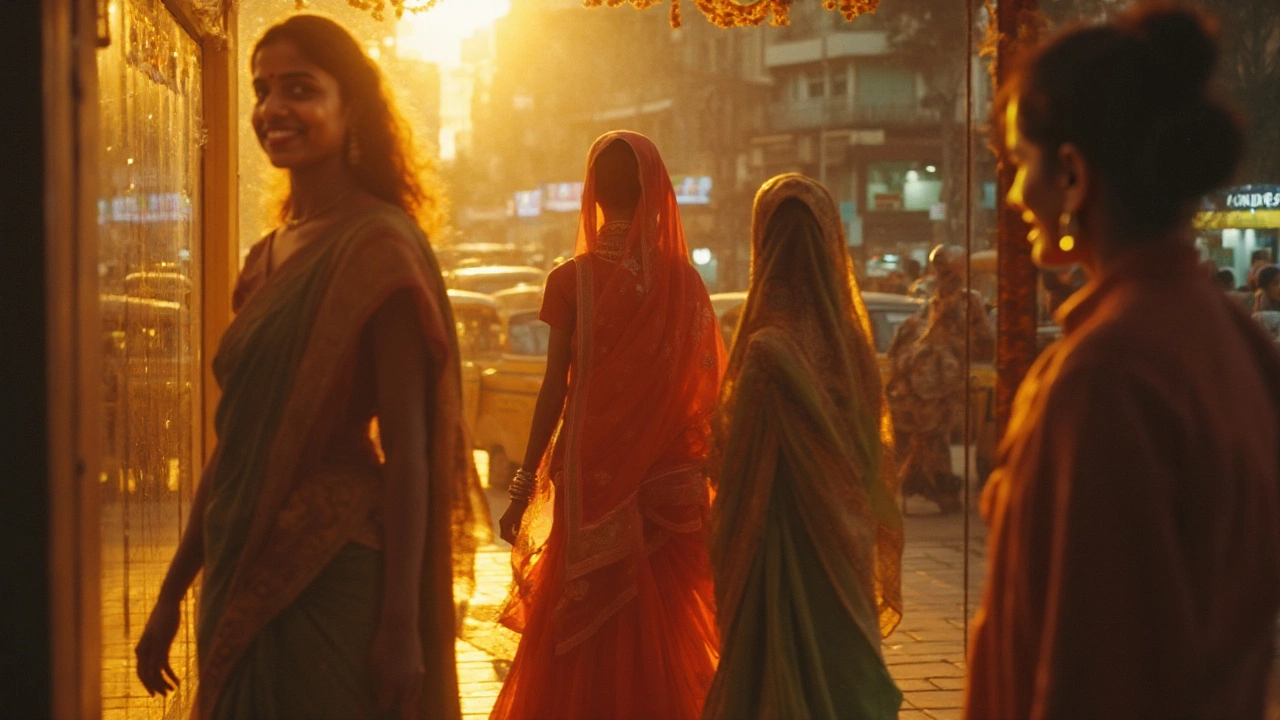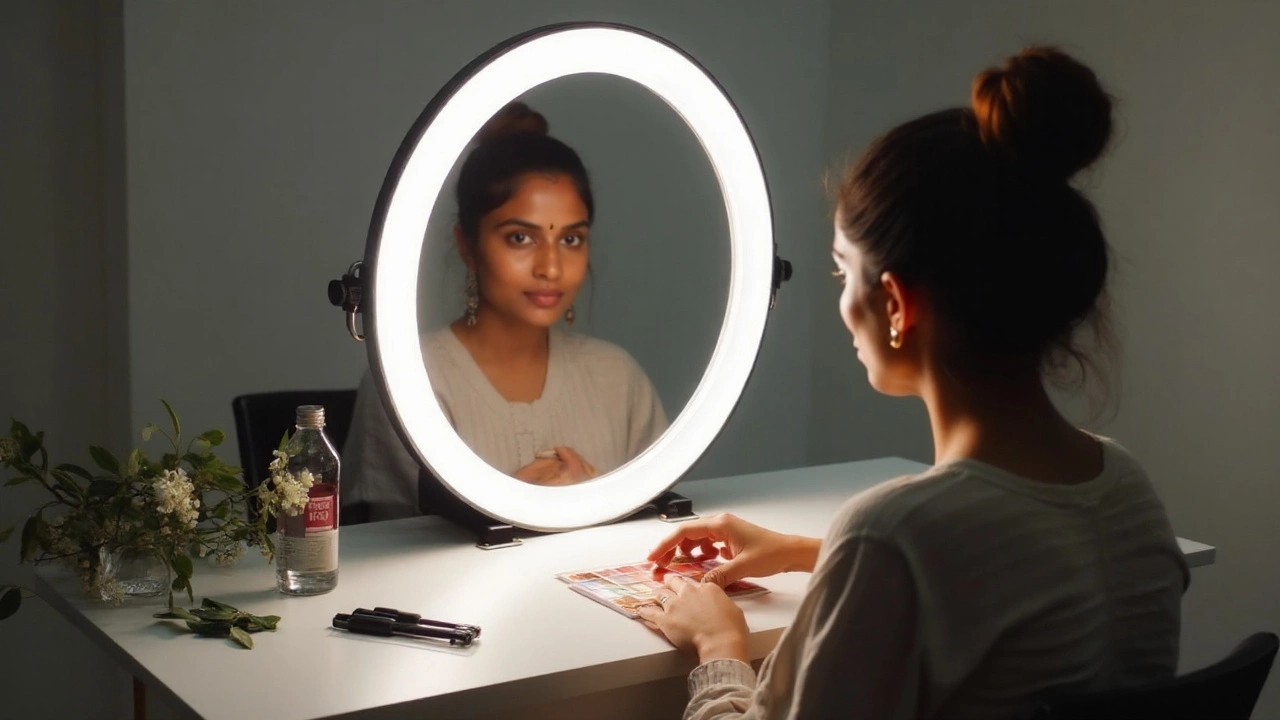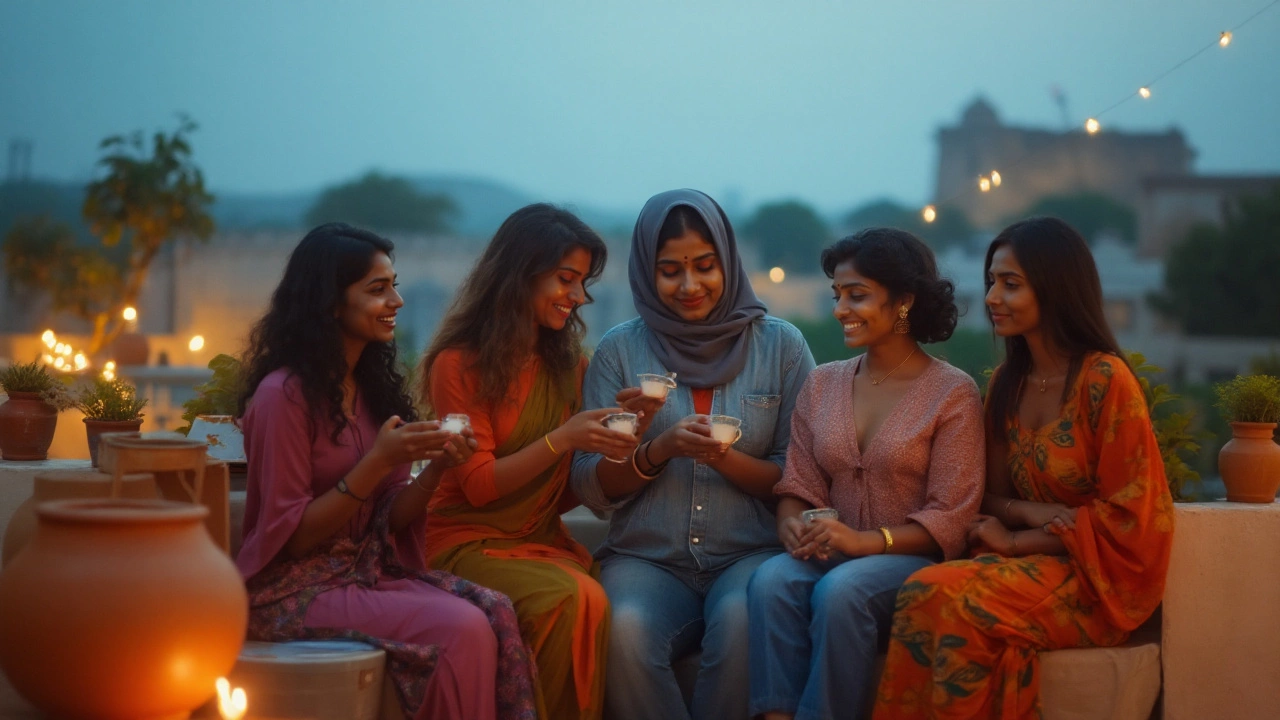Who Is the Most Beautiful Woman in the World? A 2025 Evidence-Backed Look
 Sep, 10 2025
Sep, 10 2025
Ask five people who the most beautiful woman is, and you’ll hear five different names-each with conviction. That’s the real story: beauty isn’t a single title to award but a mix of biology, culture, style, and story. If you came here for one name, I’ll be honest-there isn’t a universal winner. But there is a smart way to answer the question for yourself in 2025, without playing favorites or ignoring science. I’ll give you a simple model, a fair checklist, and a global shortlist so you can land on a pick you believe in-and explain why.
TL;DR - The Short Answer, Key Takeaways, and a Fair Way to Choose
Short on time? Here’s the gist.
- No single person is universally accepted as the most beautiful woman in the world. Preferences shift by culture, age, and media exposure.
- Science says we tend to like symmetry, clear skin, and “average” facial structure (Rhodes meta-analysis, 2006; Langlois & Roggman, 1990). That’s a bias, not a law.
- Culture shapes taste. K-beauty leans toward youthful skin and soft contours; Bollywood spotlights expressive eyes, lush hair, and charisma; West African scenes often honor sculptural cheekbones and radiant skin.
- A fair 2025 method: judge on four pillars-Face harmony, Health cues, Style/charisma, Cultural impact-then weight them based on what you value.
- Want names? Across polls, pageants, and global buzz, the recurring modern icons include Aishwarya Rai Bachchan, Deepika Padukone, Priyanka Chopra Jonas, Zendaya, Lupita Nyong’o, Gal Gadot, Margot Robbie, Beyoncé, Dilraba Dilmurat, Jun Ji‑hyun, Hande Erçel, and Zozibini Tunzi-plus timeless legends like Audrey Hepburn, Sophia Loren, and Rekha.
Before we go deeper, a reality check. Even “scientific” claims get misused. The so‑called Golden Ratio is more pop‑science than rule. And many “most beautiful” lists reflect who has the biggest platform, not who turned the stars jealous. So we’ll mix research with real-world context and end with a shortlist you can defend.

How to Judge Beauty Fairly in 2025 (Without Being Shallow or Vague)
Beauty talk gets messy fast. Here’s a simple, evidence-aware way to do it right.
1) Start with a clear framework: the 40‑40‑20 rule
- 40% Face harmony and health cues: symmetry, skin clarity, feature proportion, and expressiveness (Rhodes, 2006; Cloutier et al., 2014).
- 40% Presence and style: charisma, gaze, posture, grooming, and how someone photographs and moves (media studies consistently show styling and framing drive perceived attractiveness).
- 20% Cultural impact: recognition beyond borders-awards, iconic roles, activism, fashion influence.
Why this split? The first two blocks match how most of us actually respond (how someone looks and how they carry it). The last block is what keeps a face in your head-cultural imprint.
2) Use a quick scoring card you can repeat
- Face harmony (0-10): Does the face feel balanced? Are any one feature dominating? (You don’t need calipers-go by overall balance.)
- Health cues (0-10): Skin quality, eyes that look bright, hair vitality. Not “thinness.” Health reads in many shapes.
- Presence/style (0-10): Photographs well? Unique styling or signature look? A glance that tells a story?
- Cultural impact (0-10): Awards, global campaigns, iconic roles, or meaningful public work.
Weight them 4:4:2, add them up, and you’ll have a personal, consistent score. It’s not perfect, but it’s honest and transparent.
3) Ground it in what research actually supports
- Symmetry and “averageness”: People tend to rate more symmetric, average-composite faces as more attractive (Rhodes, 2006; Langlois & Roggman, 1990). It’s a trend, not a commandment.
- Skin quality: Clear, even skin is a strong cue of health and attractiveness (Fink & Matts, 2008).
- Feature proportion: Studies on waist‑to‑hip ratio (Singh, 1993) and facial dimorphism (Perrett et al., 1998) show patterns, but preferences vary across cultures and change with time.
- Expression and context: A warm, confident expression can shift ratings more than micro-measures of geometry (Krumhuber et al., 2013).
Use the science as a lens, not a lock.
4) Watch the traps
- Golden Ratio hype: Human faces rarely “fit” the ratio, and most “proofs” cherry-pick lines. Take it as an art reference, not a truth meter.
- Filter bias: Social media filters inflate eyes, blur skin, and slim jaws. It warps expectations. If a face only looks stunning through a filter, that’s styling, not beauty.
- Fame bias: The loudest PR wins many “most beautiful” polls. Ask yourself: if this person worked outside showbiz, would you still pick them?
- Eurocentric defaults: Global taste is wider than Western fashion mags. Consider K‑beauty, Nollywood, Bollywood, and Turkish drama scenes too.
5) A small decision tree (two minutes)
- Do you want one global pick? If yes, use the 40‑40‑20 scoring card on 5-10 names from different regions. Your winner = your answer.
- Want a fairer summary? Give three: Classic era, 2000s-2010s, and 2020s-2025. Different eras, different looks.
- Choosing for a debate? Align on rules first: weightings, sources (pageants, critics, polls), and whether digital filters are allowed.
6) The FACES cheat formula for quick calls
- F - Fit (feature balance): Are eyes, nose, lips in harmony?
- A - Aura: The vibe in photos and on video. Magnetic or flat?
- C - Clarity: Skin tone evenness and glow under natural light.
- E - Expressiveness: Micro‑expressions, eye contact, smile dynamics.
- S - Story: Cultural footprint-iconic roles, trendsetting looks, advocacy.
If a candidate hits 4 out of 5 strongly, they’re a serious contender.
7) What people say they value (useful context)
A large Dove Global Beauty and Confidence Report (2016) across 10 countries found most women prefer “natural” looks and associate beauty with confidence and self-care. Pew Research and Common Sense Media tracking in the 2020s show social platforms boost appearance pressure, especially for teens, and filter-driven looks can warp self-image. These don’t pick a winner, but they explain why “effortless” and “authentic” looks feel so current in 2025.
| Region/Scene | Commonly Valued Cues | Typical Styling | Notable Icons (non-ranking) |
|---|---|---|---|
| Bollywood / India | Expressive eyes, lush hair, graceful features, radiant skin | Soft glam, kohl-lined eyes, silk/sari couture, classic waves | Aishwarya Rai Bachchan, Deepika Padukone, Priyanka Chopra Jonas, Alia Bhatt, Sobhita Dhulipala |
| Hollywood / West | Face harmony, presence, distinctive features, versatility | Red-carpet glam, editorial minimalism, bold statements | Zendaya, Margot Robbie, Beyoncé, Angelina Jolie, Ana de Armas |
| East Asia (Korea/China) | Clear skin, soft contours, balanced features, youthful glow | Natural base, gradient lips, sleek hair, dewy finish | Jun Ji-hyun, Son Ye-jin, Dilraba Dilmurat, Liu Yifei, Lisa (Lalisa Manobal) |
| Africa | Radiant skin, sculptural cheekbones, poise, natural hair or sleek updos | Bold color, gleaming skin, statement necklines | Lupita Nyong’o, Zozibini Tunzi, Thuso Mbedu, Nomzamo Mbatha |
| Middle East / Turkey | Defined eyes, striking bone structure, luxurious styling | Smokey eyes, rich fabrics, high-shine hair | Hande Erçel, Nazanin Karimi, Yasmine Sabri |
| Latin America | Warm glow, expressive gaze, full lips, confident posture | Voluminous hair, sunlit skin, glam accents | Sofía Vergara, Eiza González, Sheynnis Palacios (MU 2023) |

Examples, Shortlists, Checklists, and Your Final Answer
You want names. The fairest way is to give you a smart shortlist, not a fake #1. Use the scoring card if you want to crown your own winner.
A timeless trio (pre-2000 greats)
- Audrey Hepburn - A lesson in grace. Large, expressive eyes, iconic poise, and a style blueprint that still sells magazines.
- Sophia Loren - Mediterranean warmth and unmistakable presence. Proof that age can deepen beauty.
- Rekha - The definition of classic Indian glamour; kohl eyes, silk, and a gaze you don’t forget.
2000s-2010s global standouts
- Aishwarya Rai Bachchan - Often cited in cross-border polls for her symmetry, eyes, and red-carpet aura.
- Priyanka Chopra Jonas - Charisma meets range: pageant queen to global lead, with high cultural imprint.
- Angelina Jolie - Archetypal features (lips, cheekbones) plus humanitarian profile; massive cultural impact.
- Gal Gadot - Clean lines, poised strength, and a superhero-era icon.
2020s-2025 modern icons
- Zendaya - Editorial chameleon; can do 1920s bob or futuristic glam without breaking the spell.
- Deepika Padukone - Symmetry, height, and an expressive gaze; a bankable face across fashion and film.
- Lupita Nyong’o - Sculptural beauty, luminous skin, fearless color and texture play on red carpets.
- Margot Robbie - Classic proportions, effortless screen glow, and a pop-culture wave rider.
- Dilraba Dilmurat - Balanced features and signature styling; huge cross-Asia appeal.
- Jun Ji-hyun - Minimalist styling, ageless aura, and a camera-friendly face shape.
- Hande Erçel - Wide-set eyes, refined lines, and fashion-forward Turkish TV influence.
- Beyoncé - Commanding presence; performance charisma that rewrites the room.
Want a one-name answer anyway? Here’s how I’d do it. I’d pick three finalists from different regions, score them with the 40‑40‑20 card, and let the highest total win. If you value cultural impact more, bump the last weight to 30% and take 5% off Face and Style. If your taste leans “natural,” drop heavy editorial styling from the images you compare.
An example scoring run (illustrative)
- Deepika Padukone - Face harmony 9, Health cues 9, Presence/style 9, Cultural impact 8 = Weighted 8.8
- Zendaya - Face harmony 8, Health cues 9, Presence/style 10, Cultural impact 9 = Weighted 9.0
- Lupita Nyong’o - Face harmony 8, Health cues 10, Presence/style 9, Cultural impact 8 = Weighted 8.8
If your style weight is higher than mine, Zendaya might edge it. If you value classic harmony more, you might lean Deepika. If skin clarity and sculptural presence do it for you, Lupita takes it. You see how the method explains the choice instead of just cheerleading.
Quick checklists you can use
Fairness checklist (so your pick doesn’t feel biased):
- Compare unfiltered photos or standardized red-carpet shots under similar lighting.
- Include at least one name from Asia, Africa, the West, and the Middle East/Latin America.
- Use the same three to five photos per person (editorial, candid, event).
- Score with the 40‑40‑20 card and show your math.
- Write one sentence on what moved you most (presence? eyes? voice?).
Spotting media tricks (pitfalls to avoid):
- Jaw-slimming or eye-enlarging filters; look for warped background lines.
- Heavy blur on skin that erases pores; real skin has texture.
- Angles shot from top-down only; ask for neutral, face-on shots too.
Simple grooming tips that change perception fast (for the rest of us):
- Light catches: a touch of highlighter on cheekbones and inner eyes reads as “awake.”
- Brows frame everything; even combing them changes the face.
- Hydration and SPF do more for glow than chasing any “golden ratio.”
Why lists disagree (and why that’s fine)
- Different inputs: pageants favor poise and Q&A; fashion favors editorial edge; film favors expression and presence on motion.
- Audience age: younger voters skew toward trending faces; older audiences recall timeless icons.
- Access: regions with bigger media engines dominate global feeds. Don’t confuse reach with beauty.
Mini‑FAQ
- Isn’t there a scientific “most beautiful” face? No. Studies suggest trends-symmetry, clear skin, balanced features-but no fixed champion. The Golden Ratio doesn’t crown a winner.
- Why do standards change? Fashion cycles, film archetypes, and tech all nudge taste. In 2025, “natural but polished” and healthy skin read as premium.
- Do pageant winners equal the world’s most beautiful? Pageants test poise, speaking, and stage craft. Beauty is part of it, not the whole.
- Can two people with opposite looks both be “most beautiful” to different crowds? Yes. Preference is multi-peak, not one peak.
- Does skin tone bias still affect lists? Yes, especially where media lacks diversity. Balance your shortlist on purpose to counter that.
- Are filters wrecking our sense of beauty? They can. Studies on social media use and body image in the 2020s show links to dissatisfaction. Use standardized shots for fair comparison.
Make your own 2025 answer in five steps
- Pick 8-12 candidates from at least four regions (mix film, fashion, and pageant winners).
- Collect three similar-context photos each (event, editorial, candid) without obvious filters.
- Score with Face harmony, Health cues, Presence/style, and Cultural impact (weights 40‑40‑20).
- Write a one-line reason for your top three; it forces honesty about what moved you.
- Share your top pick plus two alternates by era. You’ll have a defensible, respectful answer.
If you still want my single pick today: With 2025’s taste for healthy skin, expressive eyes, and editorial versatility, I’d lean Zendaya by a nose over Deepika Padukone and Lupita Nyong’o-on presence and cross-genre styling. Your card may land differently, and that’s the point: explain it, don’t pretend it’s universal.
Next steps and troubleshooting
- For debate hosts: Share the 40‑40‑20 rubric ahead of time. Ban filters. Allow one “wildcard” category (story/impact) to keep it lively.
- For classroom/media projects: Pair this topic with short reads on Rhodes (2006) and Langlois & Roggman (1990). Ask students to compare two faces using standardized shots, then reflect on bias.
- For brand teams: Test faces across regions. Don’t assume a U.S. “it-girl” converts in India, Korea, or Nigeria. Run A/B creative with local styling.
- If your list feels samey: Add one classic icon and one emerging talent from a different region. Then rescore.
- If you disagree with every list online: Good. Build your own with the card and publish your method along with your picks.
Sources mentioned (by name, no links): Rhodes, “The evolutionary psychology of facial beauty” (2006 meta-analysis); Langlois & Roggman, Psychological Science (1990, face averaging); Singh, Journal of Personality and Social Psychology (1993, waist‑hip ratio); Perrett et al., Nature (1998, sexual dimorphism and attractiveness); Cloutier et al., Social Cognitive and Affective Neuroscience (2014, skin health cues); Fink & Matts, International Journal of Cosmetic Science (2008, skin color homogeneity); Dove Global Beauty and Confidence Report (2016); Common Sense Media (2022-2024) reports on social media and body image; Pew Research Center briefs on social media and appearance pressure (2022-2024).